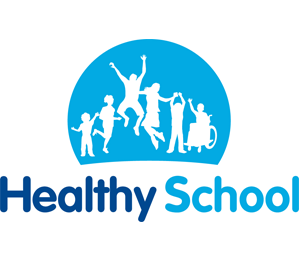Our Intent: Why our Design and Technology curriculum looks like this
The Green Lane Design and Technology curriculum teaches children through a variety of creative and practical activities. Pupils are taught:
- The knowledge, understanding and skills needed to engage in an iterative process of designing and making.
- Progressive skills to ensure they are able to learn and practice in order to develop as they move through the school.
- The design process, which is initially teacher, led to allow pupils to observe and understand the decision-making procedure. Their independence increases as they progress through the school and are confident in making achievable designs.
- To evaluate their work as it allows children to suggest adaptations that may improve their product and provides the opportunity to recognise their successes; this is a key skill, which they need throughout their life.
- Cooking lessons are often cross-curricular – linking the product to the topic the pupils are studying. This captures their interest and motivates them in their learning.
What are the aims of the Green Lane Curriculum for Design and Technology?
The Green Lane Curriculum for Design and Technology follows the aims of the National Curriculum to ensure that all pupils:
- Develop the creative, technical and practical expertise needed to perform everyday tasks confidently and to participate successfully in an increasingly technological world;
- Build and apply a repertoire of knowledge, understanding and skills in order to design and make high-quality prototypes and products for a wide range of users;
- Critique, evaluate and test their ideas and products and the work of others; and
- Understand and apply the principles of nutrition and learn how to cook.
Design and Technology Subject Content: Key Stage 1
Through a variety of creative and practical activities, pupils should be taught the knowledge, understanding and skills needed to engage in an iterative process of designing and making. They should work in a range of relevant contexts [for example, the home and school, gardens and playgrounds, the local community, industry and the wider environment].
When designing and making, pupils should be taught to:
- Design:
- design purposeful, functional, appealing products for themselves and other users based on design criteria;
- generate, develop, model and communicate their ideas through talking, drawing, templates, mock-ups and, where appropriate, information and communication technology.
- Make:
- select from and use a range of tools and equipment to perform practical tasks [for example, cutting, shaping, joining and finishing];
- select from and use a wide range of materials and components, including construction materials, textiles and ingredients, according to their characteristics.
- Evaluate:
- explore and evaluate a range of existing products;
- evaluate their ideas and products against design criteria.
- Technical Knowledge:
- build structures, exploring how they can be made stronger, stiffer and more stable;
- explore and use mechanisms [for example, levers, sliders, wheels and axles], in their products.
- Cooking and Nutrition:
- use the basic principles of a healthy and varied diet to prepare dishes;
- understand where food comes from.
Design and Technology Subject Content: Key Stage 2
Through a variety of creative and practical activities, pupils should be taught the knowledge, understanding and skills needed to engage in an iterative process of designing and making. They should work in a range of relevant contexts [for example, the home, school, leisure, culture, enterprise, industry and the wider environment].
When designing and making, pupils should be taught to:
- Design:
- use research and develop design criteria to inform the design of innovative, functional, appealing products that are fit for purpose, aimed at particular individuals or groups;
- generate, develop, model and communicate their ideas through discussion, annotated sketches, cross-sectional and exploded diagrams, prototypes, pattern pieces and computer-aided design.
- Make:
- select from and use a wider range of tools and equipment to perform practical tasks [for example, cutting, shaping, joining and finishing], accurately;
- select from and use a wider range of materials and components, including construction materials, textiles and ingredients, according to their functional properties and aesthetic qualities.
- Evaluate:
- investigate and analyse a range of existing products;
- evaluate their ideas and products against their own design criteria and consider the views of others to improve their work;
- understand how key events and individuals in design and technology have helped shape the world.
- Technical Knowledge:
- apply their understanding of how to strengthen, stiffen and reinforce more complex structures;
- understand and use mechanical systems in their products [for example, gears, pulleys, cams, levers and linkages];
- understand and use electrical systems in their products [for example, series circuits incorporating switches, bulbs, buzzers and motors];
- apply their understanding of computing to program, monitor and control their products.
- Cooking and Nutrition:
- understand and apply the principles of a healthy and varied diet;
- prepare and cook a variety of predominantly savoury dishes using a range of cooking techniques;
- understand seasonality, and know where and how a variety of ingredients are grown, reared, caught and processed.
Please click here to view our subject content by topics for KS1 and KS2.
Implementation and Impact: How do we teach our Design and Technology curriculum and what is the purpose of our Design and Technology curriculum?
| IMPLEMENTATION | IMPACT |
| Structured process Each year group follows the process of research, design, make and evaluate. Health and Safety Children are made aware of health and safety issues, which are related to the task they are completing. Cross-curricular links There are clear and appropriate cross-curricular links to underpin learning areas across the curriculum giving the children opportunities to learn life skills and apply skills to ‘hands on’ situations in a purposeful context. Approaches to teaching A wide variety of teaching approaches are used in Design and Technology lessons to ensure children make good progress, and all learning styles are catered for. Class teachers ensure there is a good balance of whole class, group work and individual learning in Design and Technology lessons. Displays We take pride in displaying the children’s products during the relevant topics to celebrate the children’s work. Independent learning There is the opportunity for independent problem solving and skills practise during Design and Technology lessons. This helps to develop the individual’s confidence and teaches perseverance as well as giving them ownership over their own work. Collaborative learning Children can be asked to work as a pair or in a group to complete a task. This encourages the children to support one another, compromise and share ideas to help towards a shared goal. Outdoor learning We have a gardening area and Gardening Club where the children help to grow plants and vegetables. They often use the produce to cook during the club or take some home to enjoy. | Practise of the processes will encourage confidence and the use of these skills outside the school environment. Children will have a growing understanding of Design and Technology. They will be able to demonstrate their knowledge when using tools or skills in both lessons and opportunities out of school. The skills required in Design and Technology will support learning in other areas of the curriculum. Children will achieve the lesson objective either independently or collaboratively. Children will share their work with others and express why they are proud of their achievements. They will evaluate their work using the vocabulary of design and technology. Children will learn the benefits of persevering with a task independently. Children will learn how to work with others both giving and receiving help and constructive criticism, which they can apply to other lessons and life outside the school environment. |
Pedagogy
| Our Teaching Sequence |
| As part of a topic lesson, learn about/research a product/mechanism/type of food Brief review of prior knowledge and key vocabulary Specify key equipment/materials/skills required Create a design that will meet the specification Use a mixture of both new and prior skills to create the product Evaluate their product against their specification. |
| Possible Pedagogical Approaches used in Design and Technology |
| Direct teacher instruction; modelling of skills and techniques; demonstration Inquiry-based learning; outdoor learning Teacher modelling; mix of individual, paired and group instruction Pupil-led learning; opportunities to showcase learning |
Please click here to view our Progression of Skills for Design and Technology.








